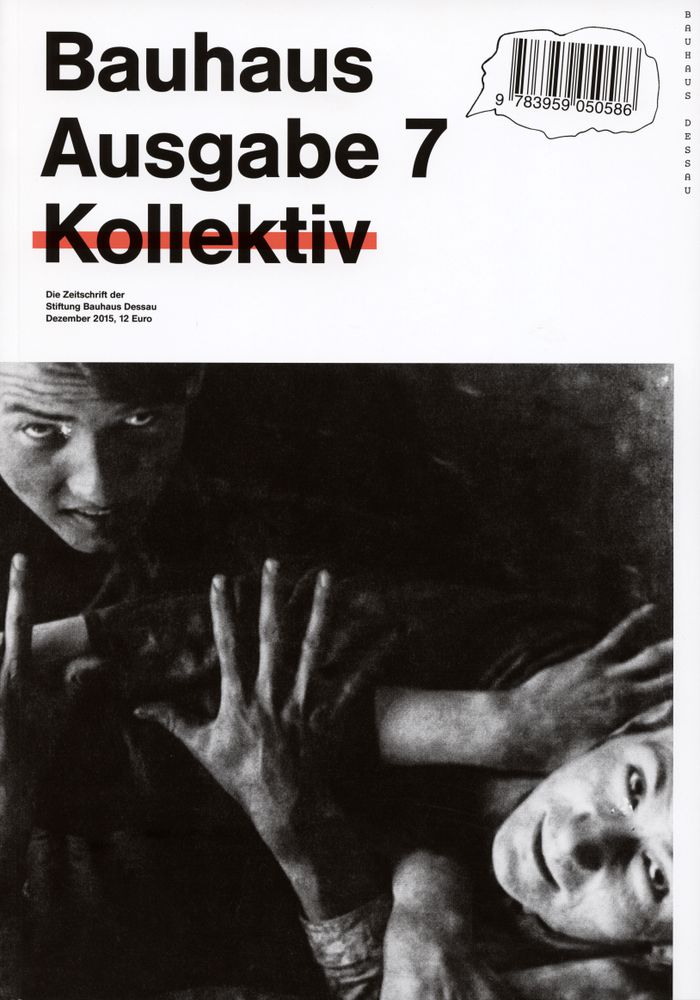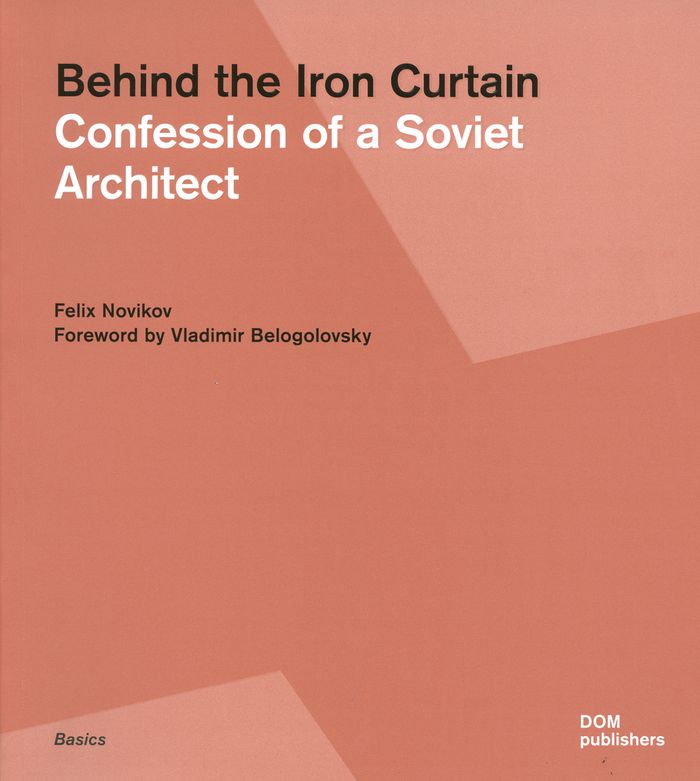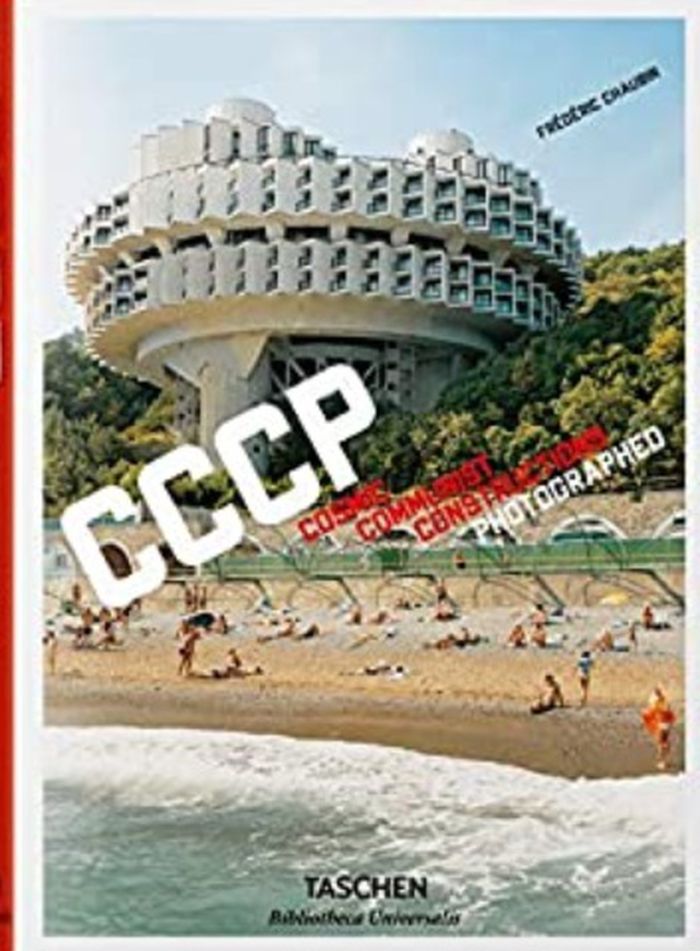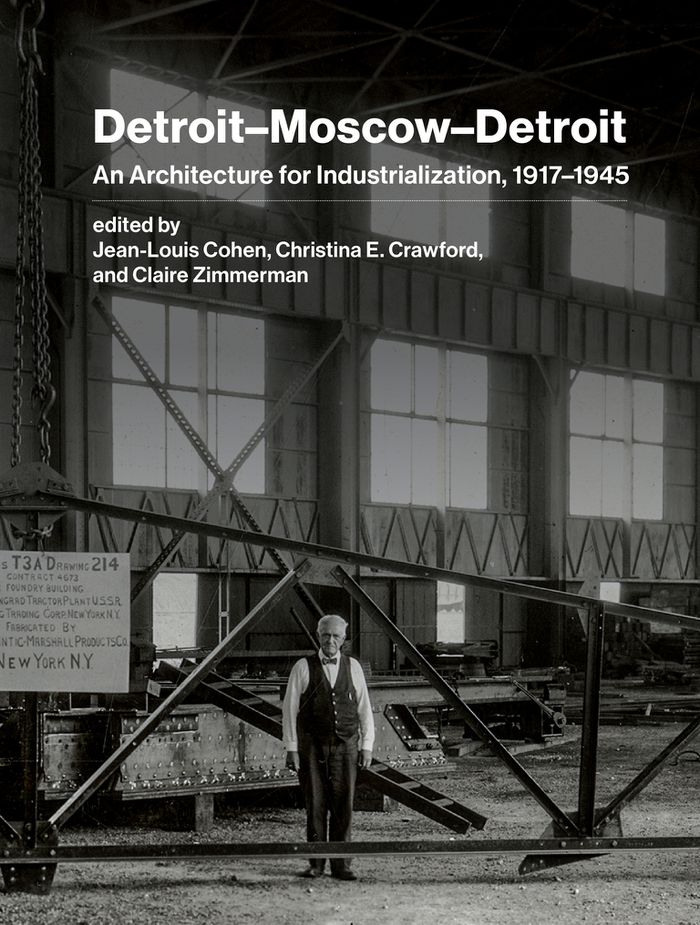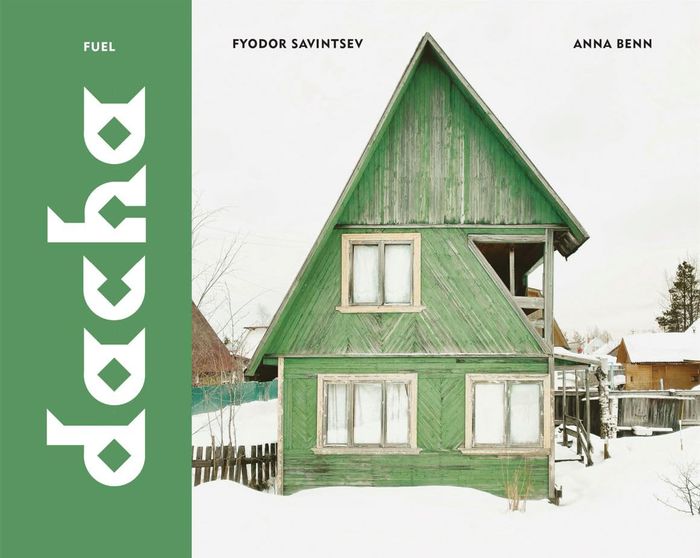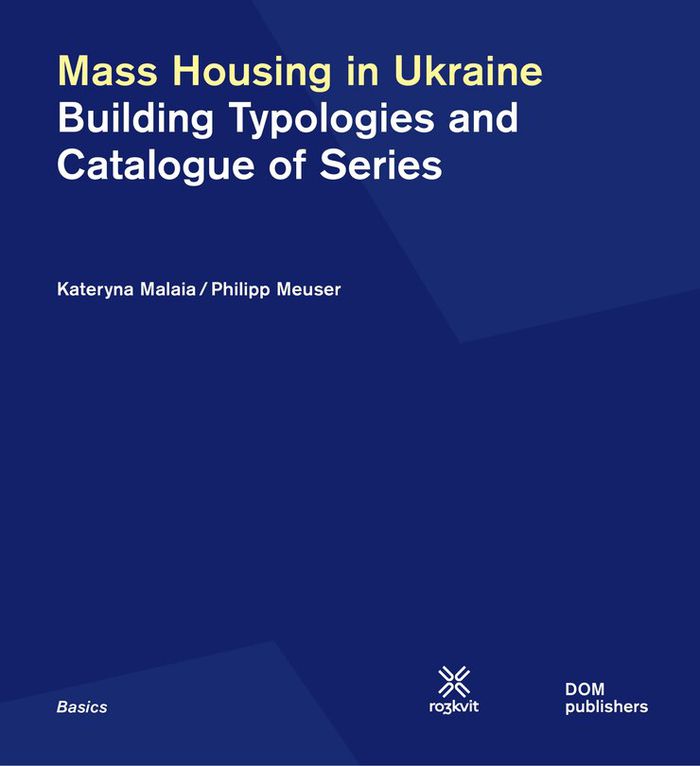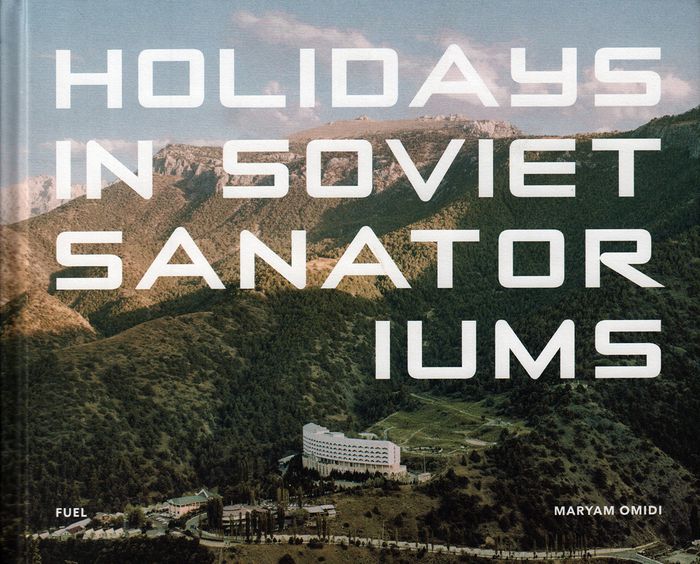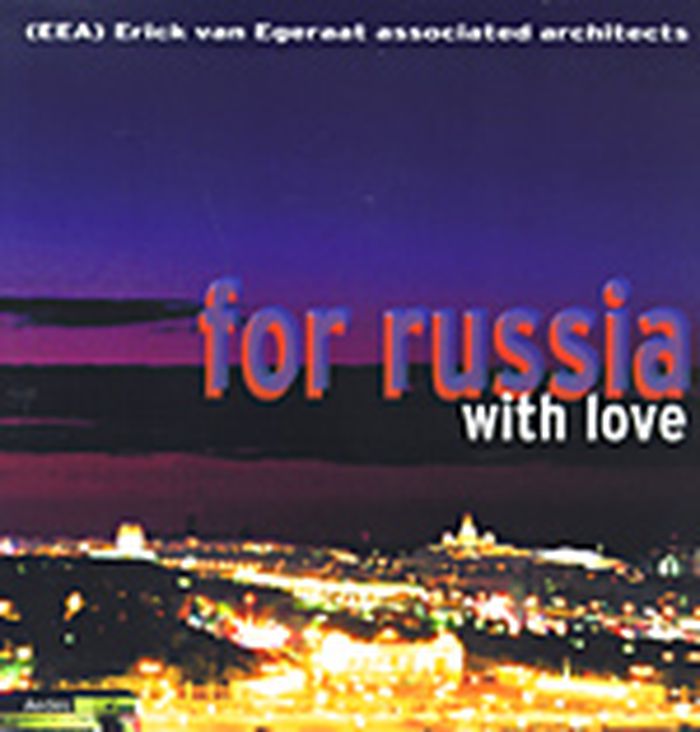Bauhaus no.7: Collective
$36.00
(available to order)
Summary:
The Bauhaus Dessau Foundation devoted its seventh issue to an international group of contemporary collectives, unorthodox thinkers and solo artists in architecture, design and art. The publication addresses communal and cooperative models established at the Bauhaus such as Hannes Meyer’s co-op principle in the USSR and Chile, and anonymity and conflict in Gropius’s(...)
Bauhaus no.7: Collective
Actions:
Price:
$36.00
(available to order)
Summary:
The Bauhaus Dessau Foundation devoted its seventh issue to an international group of contemporary collectives, unorthodox thinkers and solo artists in architecture, design and art. The publication addresses communal and cooperative models established at the Bauhaus such as Hannes Meyer’s co-op principle in the USSR and Chile, and anonymity and conflict in Gropius’s architects collaborative (TAC) in the USA while looking at the options and potentials of collective design today. It sheds light on the link between the Bauhaus and the upcoming Architecture Biennale in Venice, considers why architects in Spain currently invest more in collective design practices and discusses how current cooperative societies influence the collective identity around the world. Contributors include Pelin Tan, Alejandro Aravena, Vesna Meštric, David F. Maulen, Richard Anderson, Thomas Demand, Chris Dercon, DE - 9 architects, artists and urban planners in Berlin, Estudio SIC, Spain, plus many more.
Magazines
books
$58.95
(available to order)
Summary:
More than four decades of Communism in Central and Eastern Europe has left deep scars in Europe. The post-1945 cultural fixation of countries in Central and Eastern Europe on the USSR stands in sharp contrast with Western Europes orientation towards the United States. The contradistinctions and similarities between East and West are subject to critical examination in a(...)
Architecture since 1900, Europe
October 2004, Rotterdam
Ideals in concrete : exploring Central and Eastern Europe
Actions:
Price:
$58.95
(available to order)
Summary:
More than four decades of Communism in Central and Eastern Europe has left deep scars in Europe. The post-1945 cultural fixation of countries in Central and Eastern Europe on the USSR stands in sharp contrast with Western Europes orientation towards the United States. The contradistinctions and similarities between East and West are subject to critical examination in a series of essays in text and image. Many of these subsidiary themes are associated with the city, since the impact of Communism is nowhere more evident than in this urban space. In the planning euphoria and the building of a completely new society on rational and scientific principles we can glimpse a mirroring of the ideas and views of Communist politicians, architects and urban planners. The contemporary phenomenon of the shrinking city calls for solutions which extend beyond restructuring, conservation or regeneration; it is sooner about constructing an identity that can rival Europe and the rest of the world.
books
October 2004, Rotterdam
Architecture since 1900, Europe
$53.00
(available to order)
Summary:
The prominent architect Felix Novikov was born in 1927, when the famous Constructivist Konstantin Melnikov was at the peak of his career. Novikov tells the dramatic story of Soviet architecture, portraying the conditions he worked in and how he collaborated with the government and other participants during the creative process. He further explains how Soviet design and(...)
Behind the iron curtain: confession of a Soviet architect
Actions:
Price:
$53.00
(available to order)
Summary:
The prominent architect Felix Novikov was born in 1927, when the famous Constructivist Konstantin Melnikov was at the peak of his career. Novikov tells the dramatic story of Soviet architecture, portraying the conditions he worked in and how he collaborated with the government and other participants during the creative process. He further explains how Soviet design and planning institutes were organized with reference to the Union of the Architects of the USSR and describes the creative ideals of his generation of architects, who are today identified as Soviet Modernists. As a time witness, his memories cannot be recounted in their whole complexity by historians. Novikov also describes some of the conditions that affected his own creative fate and that of others. This book reflects the characteristics of Soviet life and its connections to architects’ professional activity. Novikov’s confessions are more than that of an architect; they give a testimony to daily life in the Soviet Union from Stalin to glasnost.
Architecture Monographs
CCCP (Multilingual Edition)
$26.95
(available to order)
Summary:
This publication explores 90 buildings in 14 former Soviet Republics. Each of these structures expresses what Chaubin considers the fourth age of Soviet architecture, an unknown burgeoning that took place from 1970 until 1990. Contrary to the 1920s and 1950s, no “school” or main trend emerges here. These buildings represent a chaotic impulse brought about by a decaying(...)
CCCP (Multilingual Edition)
Actions:
Price:
$26.95
(available to order)
Summary:
This publication explores 90 buildings in 14 former Soviet Republics. Each of these structures expresses what Chaubin considers the fourth age of Soviet architecture, an unknown burgeoning that took place from 1970 until 1990. Contrary to the 1920s and 1950s, no “school” or main trend emerges here. These buildings represent a chaotic impulse brought about by a decaying system. Taking advantage of the collapsing monolithic structure, architects went far beyond modernism, going back to the roots or freely innovating. Some of the daring ones completed projects that the Constructivists would have dreamt of (Druzhba Sanatorium, Yalta), others expressed their imagination in an expressionist way (Palace of Weddings, Tbilisi). A summer camp, inspired by sketches of a prototype lunar base, lays claim to Suprematist influence (Prometheus youth camp, Bogatyr). Then comes the “speaking architecture” widespread in the last years of the USSR: a crematorium adorned with concrete flames (Crematorium, Kiev), a technological institute with a flying saucer crashed on the roof (Institute of Scientific Research, Kiev), a political center watching you like Big Brother (House of Soviets, Kaliningrad).
Photography by Region
$66.00
(available to order)
Summary:
Between 1917 and 1945, a tide of hyperindustrialization washed over the United States and the Soviet Union. While the two countries remained ideologically opposed, the factories that amassed in Stalingrad, Moscow, Detroit, Buffalo, and Cleveland were strikingly similar, as were the new forms of modern work and urban and infrastructural development that supported this(...)
Architectural Theory
September 2023
Detroit-Moscow-Detroit: An architecture for industrialization, 1917-1945
Actions:
Price:
$66.00
(available to order)
Summary:
Between 1917 and 1945, a tide of hyperindustrialization washed over the United States and the Soviet Union. While the two countries remained ideologically opposed, the factories that amassed in Stalingrad, Moscow, Detroit, Buffalo, and Cleveland were strikingly similar, as were the new forms of modern work and urban and infrastructural development that supported this industrialization. Drawing on previously unknown archival materials and photographs, the essays in ''Detroit-Moscow-Detroit'' document a stunning two-way transfer of technical knowledge between the United States and the USSR that greatly influenced the built environment in both countries, upgrading each to major industrial power by the start of the Second World War. The innovative research presented here explores spatial development, manufacturing, mass production, and organizational planning across geopolitical lines to demonstrate that capitalist and communist built environments in the twentieth century were not diametrically opposed and were, on certain sites, coproduced in a period of intense technical exchange between the two world wars. A fresh account of the effects of industrialization and globalization on US and Soviet cultures, architecture, and urban history, ''Detroit-Moscow-Detroit'' will find wide readership among architects, urban designers, and scholars of architectural, urban, and twentieth-century history.
Architectural Theory
books
Description:
viii, 240 pages, 8 unnumbered pages of plates : illustrations (some color), plans ; 27 cm
Chicago, IL ; London : The University of Chicago Press, [2024], ©2024
El Lissitzky on paper : print culture, architecture, politics, 1919-1933 / Samuel Johnson.
Actions:
Holdings:
Description:
viii, 240 pages, 8 unnumbered pages of plates : illustrations (some color), plans ; 27 cm
books
Chicago, IL ; London : The University of Chicago Press, [2024], ©2024
$51.95
(available to order)
Summary:
A dacha is a country house, made of wood, used by Soviet citizens to escape the rigors of the city for a rural idyll. Widespread in the countries of the former USSR, this important cultural and architectural form has been largely ignored academically. In ''Dacha'', Fyodor Savintsev documents this particularly Russian phenomenon. His photographs constitute a unique record(...)
Commercial interiors, Building types
September 2023
Dacha: the soviet country cottage
Actions:
Price:
$51.95
(available to order)
Summary:
A dacha is a country house, made of wood, used by Soviet citizens to escape the rigors of the city for a rural idyll. Widespread in the countries of the former USSR, this important cultural and architectural form has been largely ignored academically. In ''Dacha'', Fyodor Savintsev documents this particularly Russian phenomenon. His photographs constitute a unique record of a rapidly vanishing fairy-tale wooden world. The word ''dacha'' has been used to describe constructions ranging from grand imperial villas to small sheds. Originally bestowed by the Tsar to reward courtiers, this custom continued following the revolution, with Soviet cooperatives building dachas for their members. Supposedly for the benefit of laborers, in reality they were destined for those favored by the State, including famous writers, architects and artists from Pasternak to Prokofiev. The fall of the Soviet Union accelerated their use, as economic uncertainty forced city dwellers toward self-sufficiency. The dacha tradition has survived revolution, war and the collapse of Communism, becoming an integral part of life in the process. Using contemporary photographs to showcase these uniquely individual buildings for the first time, alongside an introduction explaining their historical and cultural context, Dacha is the only publication of its kind.
Commercial interiors, Building types
$84.95
(available in store)
Summary:
The all-out war in Ukraine, started by the Russian Federation in 2022 has disproportionally affected housing and residential infrastructure. The destruction is so targeted, and the damage so significant that it has disfigured entire neighborhoods and erased entire cities. With the scale of damage and loss in mind, and the future wide-ranging reconstruction that will(...)
Mass Housing in Ukraine: Building Typologies and Catalogue of Series
Actions:
Price:
$84.95
(available in store)
Summary:
The all-out war in Ukraine, started by the Russian Federation in 2022 has disproportionally affected housing and residential infrastructure. The destruction is so targeted, and the damage so significant that it has disfigured entire neighborhoods and erased entire cities. With the scale of damage and loss in mind, and the future wide-ranging reconstruction that will inevitably take place after the war, this study examines the history and typologies of mass housing in Ukraine. It does so in order to evaluate what is lost, explain the diversity of modes of urban living that exist in Ukrainian cities, and finally, reconsider the narrative of how Ukrainian housing came about. The study covers the period of the last 100 years: the time of the most dramatic expansion and change in character of Ukrainian cities. It begins with the experimental buildings constructed in the Soviet Central and Eastern Ukraine and Polish Western Ukraine in the 1920s and 1930s, continues by looking at type projects from the Stalin era, as well as the serial apartment blocks built during the reigns of Khrushchev and Brezhnev and in the late USSR. Finally, it showcases individually designed, yet also typical residential buildings from the turbo-capitalist period of the 1990s and 2000s.
Collective Housing
$42.50
(available to order)
Summary:
Visiting a Soviet sanatorium is like stepping back in time. Originally built in the 1920s, they afforded workers a place to holiday, courtesy of a state-funded voucher system. At their peak they were visited by millions of citizens across the USSR every year. A combination of medical institution and spa, the era’s sanatoriums are among the most innovative buildings of(...)
Holidays in soviet sanatoriums
Actions:
Price:
$42.50
(available to order)
Summary:
Visiting a Soviet sanatorium is like stepping back in time. Originally built in the 1920s, they afforded workers a place to holiday, courtesy of a state-funded voucher system. At their peak they were visited by millions of citizens across the USSR every year. A combination of medical institution and spa, the era’s sanatoriums are among the most innovative buildings of their time. Although aesthetically diverse, Soviet utopian values permeated every aspect of these structures; Western holidays were perceived as decadent. By contrast, sanatorium breaks were intended to edify and strengthen visitors: health professionals carefully monitored guests throughout their stay, so they could return to work with renewed vigor. Certain sanatoriums became known for their specialist treatments, such as crude-oil baths, radon water douches and stints in underground salt caves. While today some sanatoriums are in critical states of decline, many are still fully operational and continue to offer their Soviet-era treatments to visitors. Using specially commissioned photographs by leading photographers of the post-Soviet territories, and texts by sanatorium expert Maryam Omidi, this book documents over 45 sanatoriums and their unconventional treatments. From Armenia to Uzbekistan, it represents the most comprehensive survey to date of this fascinating and previously overlooked Soviet institution.
Photography monographs
$19.95
(available in store)
Summary:
The Russian projects by (EEA) Erick van Egeraat associated architects are another step in EEA’s progression east. Beginning in 1994 with the completion of the first Eastern Europe Head office of ING Bank and Nationale Nederlanden, EEA has steadily worked on a number of projects in Hungary, Czech Republic, Poland and now Russia. Deeply moved by the richness of the(...)
Erik van Egeraat associated architects : for Russia with love
Actions:
Price:
$19.95
(available in store)
Summary:
The Russian projects by (EEA) Erick van Egeraat associated architects are another step in EEA’s progression east. Beginning in 1994 with the completion of the first Eastern Europe Head office of ING Bank and Nationale Nederlanden, EEA has steadily worked on a number of projects in Hungary, Czech Republic, Poland and now Russia. Deeply moved by the richness of the architecture of these Eastern Europe countries, Erick van Egeraat set himself the task to develop a contemporary response to their architectural heritage. Connecting the demands of contemporary life with the quality of the historical surroundings, he defines his approach to architecture as ‘Modern Baroque’. Seeking to develop an architecture that can inspire, offering temptation as well as solace, the opportunity to work in the capital of the former USSR, and working closely together with the client, Capital Group, on a number of projects, the context of Russia today, has been proven to be completely different from previous experiences in Eastern Europe. The EEA Moscow projects seek to express a new sensuality, catering for the new lifestyle of Moscow citizen after generations of communism. The projects - housing as well as offices and entertainment- express a desire to bridge the potential gap between progress and development and the quality of historic architecture. The invitation to be part of the international competition for the extension of the Mariinsky theatre in St. Petersburg gave EEA the opportunity to further explore the possibilities of ‘Modern Baroque’. Challenged by the intricate detailing and materialization of the classical architecture of the existing theatre, and supported by extensive experience in theatre design in the UK and the Netherlands, the proposal for the Mariinsky is an example of Erick van Egeraat’s quest for contemporary architecture.
small format
